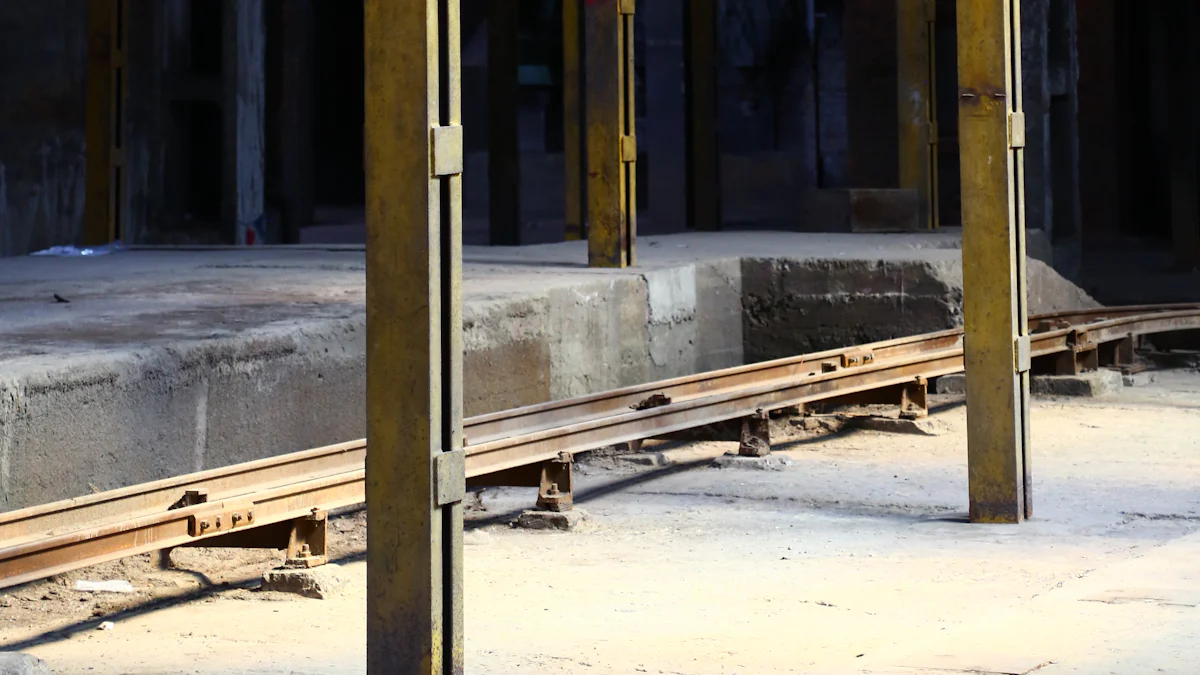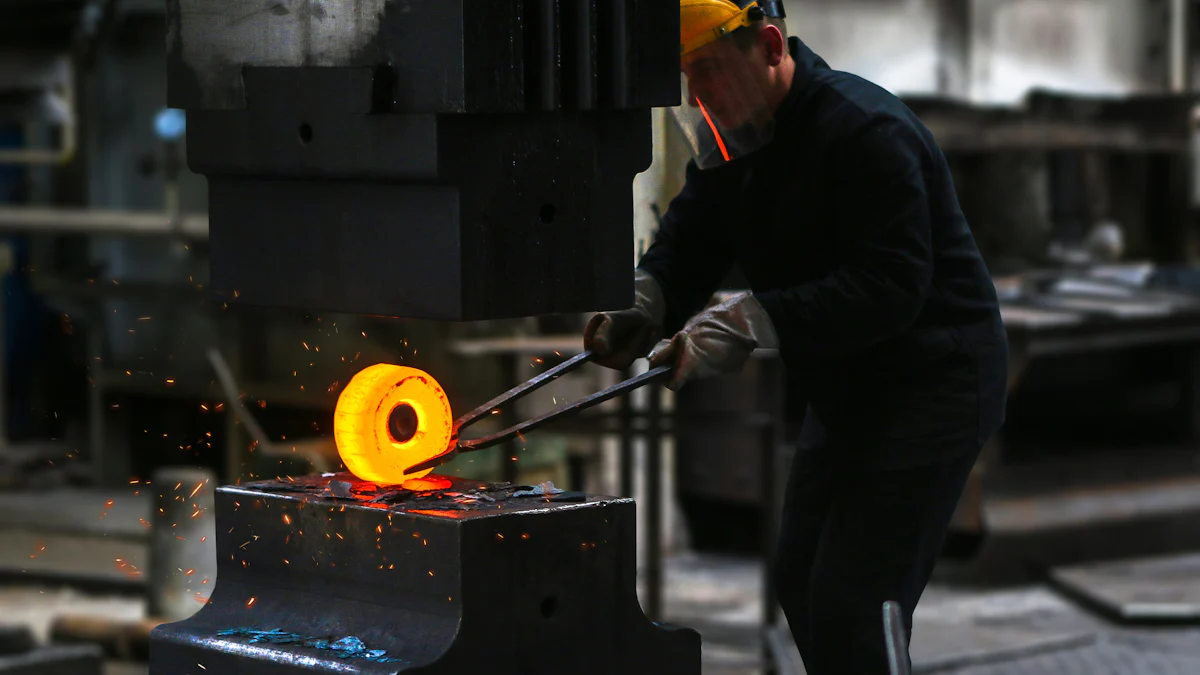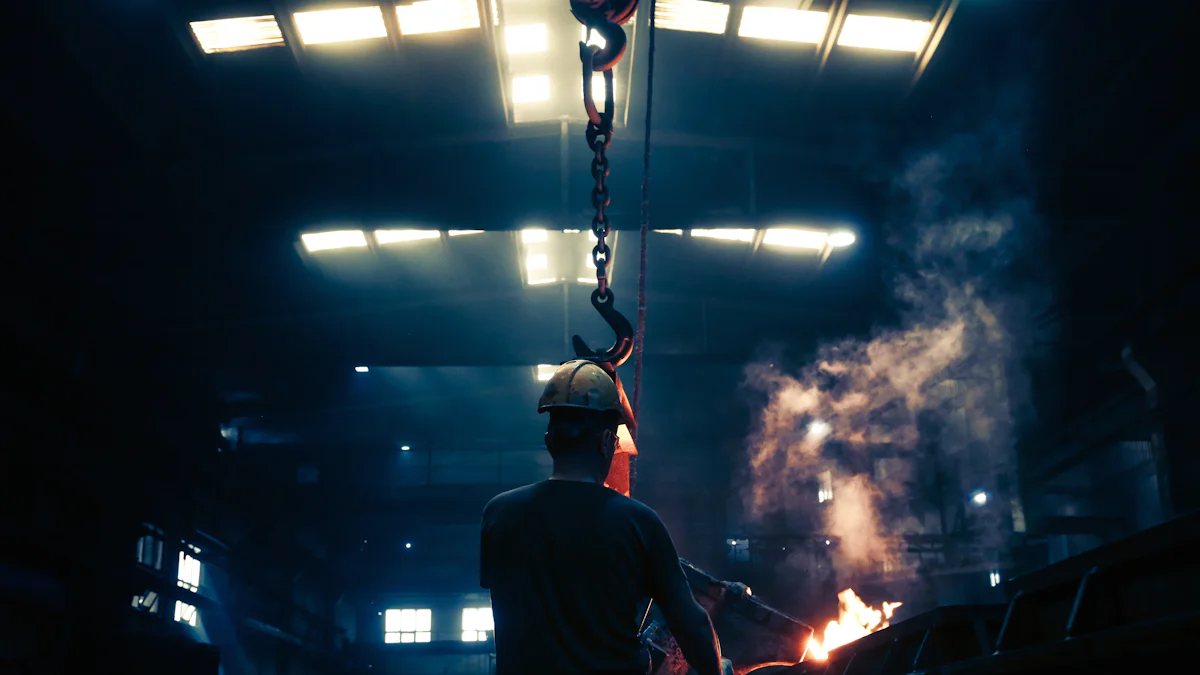
News

Understanding Induction Annealing serves as a transformative heat treatment process that softens metal by altering its microstructure. You will find it invaluable for modifying electrical or mechanical properties. This method excels in reducing hardness, enhancing ductility, and relieving internal stresses. Unlike conventional methods, induction annealing offers reliable, repeatable, and non-contact heating. The Induction Heating Machine for Annealing provides energy-efficient heat quickly, making it a preferred choice. Additionally, the Induction Annealing Machine with Handheld capabilities allows for precise control over metal properties, ensuring optimal results in various applications.
Understanding Induction Annealing
Definition and Basic Principles
Understanding Induction Annealing involves recognizing it as a specialized heat treatment process. You use this method to alter the microstructure of metals, which in turn modifies their electrical or mechanical properties. This process is essential for reducing hardness, increasing ductility, and eliminating internal stresses in materials like steel. By employing electromagnetic induction, you can heat metals efficiently and precisely. This technique ensures that the metal reaches the desired temperature without direct contact, making it a reliable and repeatable method.
Key Characteristics and Importance
Induction annealing stands out due to its unique characteristics. You benefit from its rapid heating capabilities, which significantly reduce processing times compared to traditional methods. The process delivers energy only where it's needed, enhancing efficiency and minimizing waste. This targeted approach not only saves energy but also reduces the potential for process errors. You gain precise control over the heating cycles, allowing for consistent and repeatable results. This consistency is crucial for industries that demand high-quality materials with uniform properties.
Moreover, induction annealing offers non-contact heating, which preserves the metallurgical characteristics of the material. This feature is particularly advantageous when you need to maintain the integrity of the metal while altering its properties. The ability to control the process with precision ensures that you can achieve the desired hardness, toughness, and internal stress levels in the metal. As a result, induction annealing becomes a preferred choice for applications requiring high-quality and reliable material properties.
How Induction Annealing Works

The Science Behind Induction Heating
Understanding the science behind induction heating is crucial for grasping how induction annealing functions. This process relies on electromagnetic induction to heat metals efficiently.
Electromagnetic Induction
Electromagnetic induction forms the backbone of induction annealing. You use this principle to generate heat within a metal without direct contact. When you pass an alternating current through a coil, it creates a magnetic field. This field induces eddy currents in the metal, causing it to heat up. The beauty of this method lies in its precision. You can control the depth and intensity of the heat by adjusting the frequency and power of the current. This control ensures that the metal reaches the desired temperature uniformly.
Heat Generation Process
The heat generation process in induction annealing is both rapid and efficient. As the eddy currents flow through the metal, they encounter resistance, which generates heat. This heat alters the microstructure of the metal, reducing hardness and improving ductility. You benefit from the speed of this process, as it significantly reduces the time required for annealing compared to traditional methods. Moreover, the non-contact nature of induction heating preserves the surface quality of the metal, making it ideal for applications where surface integrity is crucial.
Process and Equipment
To perform induction annealing effectively, you need to understand the process and equipment involved.
Key Components and Setup
The setup for induction annealing includes several key components. You require an induction coil, a power supply, and a cooling system. The induction coil is the heart of the system. It generates the magnetic field necessary for heating. You place the metal workpiece inside or near the coil, depending on the design. The power supply provides the alternating current needed to create the magnetic field. You must ensure that the power supply is capable of delivering the required frequency and power for your specific application.
A cooling system is essential to prevent overheating and maintain the desired temperature. You can use water or air cooling, depending on the setup. Proper cooling ensures that the metal cools down slowly after reaching the desired temperature, which is crucial for achieving the desired material properties.
For those interested in seeing the process in action, you can explore various annealing videos available online. These resources provide visual insights into the setup and operation of induction annealing systems, enhancing your understanding of this advanced heat treatment method.
Benefits of Induction Annealing
Efficiency and Speed
Induction annealing offers remarkable efficiency and speed, setting it apart from traditional methods. You will find that this process delivers energy directly to the metal, ensuring rapid heating. Unlike conventional ovens, which heat the surrounding air, induction annealing focuses energy precisely where it's needed. This targeted approach reduces heating times significantly, allowing you to complete annealing cycles faster. The quick heat cycles not only save time but also enhance productivity in manufacturing settings.
Precision and Control
When it comes to precision and control, induction annealing excels. You can achieve precise temperature control, which is crucial for altering the microstructure of metals accurately. The ability to control the depth and intensity of heat ensures uniform heating, reducing the risk of distortion or uneven properties. This level of control is not dependent on operator skill, making the process more reliable and repeatable. You can consistently produce high-quality materials with the desired properties, meeting the stringent demands of various industries.
Energy Savings and Environmental Impact
Induction annealing is an energy-efficient process that offers substantial cost savings. By delivering energy only where it's needed, you minimize waste and reduce power usage. This efficiency translates into lower operational costs, making induction annealing a cost-effective choice. Additionally, the process eliminates the need for continuous power to large heating areas, further conserving energy. The environmental impact is also reduced, as induction annealing does not rely on open flames or gas ovens, making it a safer and cleaner alternative. You contribute to a more sustainable manufacturing process by choosing induction annealing.
Applications of Induction Annealing

Automotive Industry
In the automotive industry, induction annealing plays a crucial role in enhancing the performance and durability of metal components. You will find that this process is essential for stress-relief annealing, which improves the toughness and internal stress levels of parts like gears and shafts. By using induction annealing, you can achieve precise control over the material properties, ensuring that each component meets the high standards required for automotive applications. This method also allows for the thermal removal of impurities, resulting in cleaner and more reliable parts.
Aerospace Industry
The aerospace industry demands materials with exceptional strength and reliability. Induction annealing provides the precision and control necessary to meet these stringent requirements. You can use this process to reduce hardness and improve ductility in critical components such as turbine blades and structural elements. The ability to heat metals uniformly and quickly ensures that the microstructure is altered without compromising the integrity of the material. This results in components that can withstand the extreme conditions encountered in aerospace environments.
Electronics and Electrical Components
In the realm of electronics and electrical components, induction annealing offers significant advantages. You can utilize this process to enhance the electrical properties of materials like copper and brass. By precisely controlling the heating and cooling cycles, you can modify the microstructure to achieve the desired conductivity and mechanical properties. This is particularly important for components such as connectors and circuit boards, where consistent performance is essential. Induction annealing ensures that these components maintain their quality and reliability throughout their lifespan.
Expert Testimony: According to DW Induction Heater, "Induction annealing enables precise and reliable control of metal material properties." This capability is especially beneficial in industries like electronics, where maintaining specific electrical characteristics is crucial.
By incorporating induction annealing into your manufacturing processes, you can achieve superior results across various industries. This method not only enhances the quality of your products but also contributes to more efficient and sustainable production practices.
Comparing Induction Annealing to Other Methods
Induction vs. Traditional Annealing
When you compare induction annealing to traditional methods, the differences become clear. Induction annealing delivers energy precisely where it's needed. This results in faster heating times and reduces the potential for process errors. You gain enhanced process control and energy savings. Induction targets only the specific area of a workpiece, increasing production rates with quicker heating cycles. This method reduces defect rates by providing repeatable and reliable heating. It maintains the metallurgical characteristics of individual metals. In contrast, traditional annealing methods, like furnace heating, often require more time, space, and energy consumption. These methods may lack the precision and efficiency that induction offers.
Induction vs. Laser Annealing
Induction annealing and laser heating serve different purposes. Induction annealing excels in precise and reliable control of metal material properties. You use it mainly for soft and stress-relief annealing. This method offers significant advantages over conventional methods, including the thermal removal of impurities during bright annealing. On the other hand, laser heating may have different applications and limitations. While lasers can provide focused heat, they might not offer the same level of control over material properties as induction. You might find laser heating suitable for specific tasks, but induction remains superior for comprehensive annealing needs.
Induction vs. Furnace Annealing
The comparison between induction and furnace annealing highlights several benefits of induction. Induction annealing allows you to anneal workpieces only where needed, reducing workpiece distortion. It enables the thermal elimination of surface impurities and offers precise temperature control. You benefit from shorter cycle times and create reliable processes with better energy efficiency. Induction also allows for the manufacturing of parts as an in-line process. In contrast, furnace annealing may struggle with precise temperature control and energy efficiency. The cycle times can be longer, and the process might not be as adaptable for in-line manufacturing. Induction provides a cleaner, more controllable, and consistent method, making it a preferred choice in various industries.
Future Developments in Induction Annealing
Technological Innovations
In the realm of induction annealing, technological innovations continue to shape the future. You will see advancements in equipment design that enhance efficiency and precision. Modern induction machines now feature improved power supplies and cooling systems. These upgrades allow you to achieve more consistent heating cycles. The integration of smart technology is another exciting development. With smart controls, you can monitor and adjust the annealing process in real-time. This capability ensures optimal results and reduces the risk of errors.
Moreover, the use of advanced materials in coil design is revolutionizing the process. These materials improve the durability and performance of induction coils. As a result, you benefit from longer equipment life and reduced maintenance costs. The focus on energy efficiency also drives innovation. New technologies aim to minimize energy consumption while maximizing output. This approach not only saves costs but also supports sustainable manufacturing practices.
Emerging Trends and Applications
Emerging trends in induction annealing highlight its expanding applications across various industries. You will notice a growing demand for this process in sectors like automotive, aerospace, and electronics. The need for high-quality materials with precise properties fuels this trend. In the automotive industry, induction annealing enhances the performance of components like gears and shafts. You achieve improved toughness and reduced internal stresses, which are crucial for vehicle reliability.
In aerospace, the focus is on materials that withstand extreme conditions. Induction annealing provides the precision needed to alter the microstructure of critical components. This capability ensures that parts like turbine blades meet stringent industry standards. The electronics sector also benefits from induction annealing. You can enhance the electrical properties of materials used in connectors and circuit boards. This process ensures consistent performance and reliability.
Scientific Research Findings:
Induction Annealing in Various Industries: Induction annealing offers advantages such as fast and efficient heating, precise temperature control, cleanliness, and controllability. It results in reduced annealing cycle times, higher-quality materials, and increased productivity.
As you explore these developments, you will find that understanding induction annealing becomes increasingly important. The process continues to evolve, offering new opportunities for innovation and efficiency in manufacturing.
Induction annealing stands as a pivotal process in modern manufacturing, offering you fast and efficient heating with precise temperature control. This method reduces cycle times and enhances material quality, boosting productivity. As technology advances, expect induction heating to grow, driven by the need for eco-friendly processes and Industry 4.0. Innovations like AI and IoT will further transform this field. Choosing the right equipment becomes crucial for optimal results. Embrace these advancements to stay ahead in your industry, ensuring sustainable and high-quality production.
Please give us a message